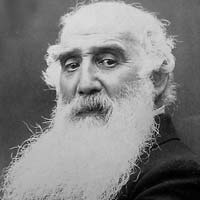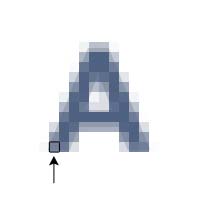| Glossary Of Giclee Terms
[15] |
P
Panorama A broad, wide-angle view of much of the - or the entire - space surrounding the viewer. Panoramas are usually scenic and have a height to width ratio of 1:2 or more. |
 |
Paper weights The weight of a piece of paper is defined by the weight in grams per square meter (gsm). Alternately, weight may be determined by what a set number of sheets would weigh in pounds. Regular bond paper that one might use in a desktop printer is generally 90 gsm or 20-24 lb.
A general breakdown of paper weights by gsm:
35-55 gsm: newspaper
130-170 gsm: posters
350 gsm: business cards |
| Photoshop Digital image (raster graphics) editing software developed by Adobe. Simply defined, Photoshop allows the user to alter photographs and other digital images by applying layers of filters. Objects can be removed from the image, colors and tones can be changed, and effects can be applied to make the image look, for instance, like a watercolor painting or pencil sketch. |
Pigment A pigment is a material that changes the color of light it reflects as the result of selective color absorption. This physical process differs from fluorescence, phosphorescence, and other forms of luminescence, in which the material itself emits light. Many materials selectively absorb certain wavelengths of light. Materials that humans have chosen and developed for use as pigments usually have special properties that make them ideal for coloring other materials. A pigment must have a high tinting strength relative to the materials it colors. It must be stable in solid form at ambient temperatures.
For industrial applications, as well as in the arts, permanence and stability are desirable properties. Pigments that are not permanent are called fugitive. Fugitive pigments fade over time, or with exposure to light, while some eventually blacken. |
| Pissarro, Camille 1830-1903: A Danish-French Impressionist painter who inspired Renoir and Cezanne. Order a Pissarro classic painting print today. |
 |
| Pixel A pixel is a small dot that represents a single element of a display. |
 |
Platen Press Cleaner A solution used to remove left over adhesive from the surface of a platen press.
Platens are flat metal (originally wood) plates that are pressed with great force against paper to create an impression. They were originally used in letterpress printing, and today are used to cut, crease or number digital or other prints. |
| PMMA PMMA or acrylic is a widely used transparent plastic material known for its applications in various markets from picture framing, car windows, smartphone screens to aquariums. It is a tough plastic, easy to shape and a great alternative to the high cost and less resilient glass. |
| Polyester Resin A type of viscous polymer that is often used in casting (poured into molds). Polyester Resin differs from epoxy resin in that it has less strength, is less adhesive, and tends to shrink. For these reasons, it is not often used as a coating, as epoxy resin is. |
Post-Processing Post-processing, also known as image editing or digital darkroom techniques, refers to the process of enhancing, retouching, and refining digital photographs using software tools and techniques after they have been captured with a camera. Post-processing allows photographers to adjust various aspects of the image, including exposure, contrast, color balance, sharpness, and composition, to achieve the desired aesthetic and visual impact.
Common post-processing tasks include cropping and straightening images, adjusting exposure and white balance, enhancing colors and contrast, removing blemishes or distractions, applying creative filters and effects, and optimizing images for printing or online sharing. Popular post-processing software options include Adobe Photoshop, Adobe Lightroom, Capture One, Affinity Photo, and GIMP (GNU Image Manipulation Program), among others. Post-processing plays a crucial role in the digital photography workflow, allowing photographers to refine their vision, correct technical imperfections, and express their creativity through the manipulation and enhancement of digital images. |
| Pressure-Sensitive Mounting The act of affixing an artwork to another surface (foam core, gatorboard, dibond, wood panelling, canvas, etc) with an adhesive that does not require heat or a chemical additive to adhere to the artwork's surface. The materials will stick together using the force of the hand, or a press designed to apply a great amount of pressure. |
| Primary Colors A set of colors that, when combined, present as different colors. Red, green and blue are additive primary colors. When overlapped in different ratios, new colors are created. Yellow, cyan and magenta are subtractive primary colors used in mixing pigments or dyes. |
 |
Primed canvas A blank painter's canvas coated with a lead paint that reduces the absorbency of the canvas and improves the application the artist's paint. Canvas may be single or double-primed, as well as coated for a specific use, such as acrylic or oil paints.
KeenART Media offers double-primed and unprimed blank artist canvases for sale.
Order online: Artist Canvas |
Print Size Print size refers to the dimensions of a printed image when reproduced on a physical medium, such as paper, canvas, or other printable substrates. Print size is typically measured in inches or centimeters and represents the width and height of the printed image. The print size is determined by factors such as the resolution of the digital image file, the aspect ratio of the image, and the dimensions of the physical print medium.
When printing digital images, photographers and designers often consider factors such as viewing distance, intended use, and display environment to determine the optimal print size for achieving the desired visual impact and readability. Large print sizes are suitable for wall art, gallery exhibitions, and poster displays, while smaller print sizes may be more appropriate for photo albums, greeting cards, or promotional materials. The choice of print size also affects the level of detail and clarity of the printed image, with larger prints requiring higher resolution digital files to maintain sharpness and image quality. |
| Proof Sheet A small section of a digital image printed on canvas in order to determine the color saturation and texture of the inks on that particular surface. Often, multiple proofs will be printed on different surfaces with various color levels, in order to compare the results. |
|
© 2002-2024 - KeenART Media Ltd.
|
|
| |
|

